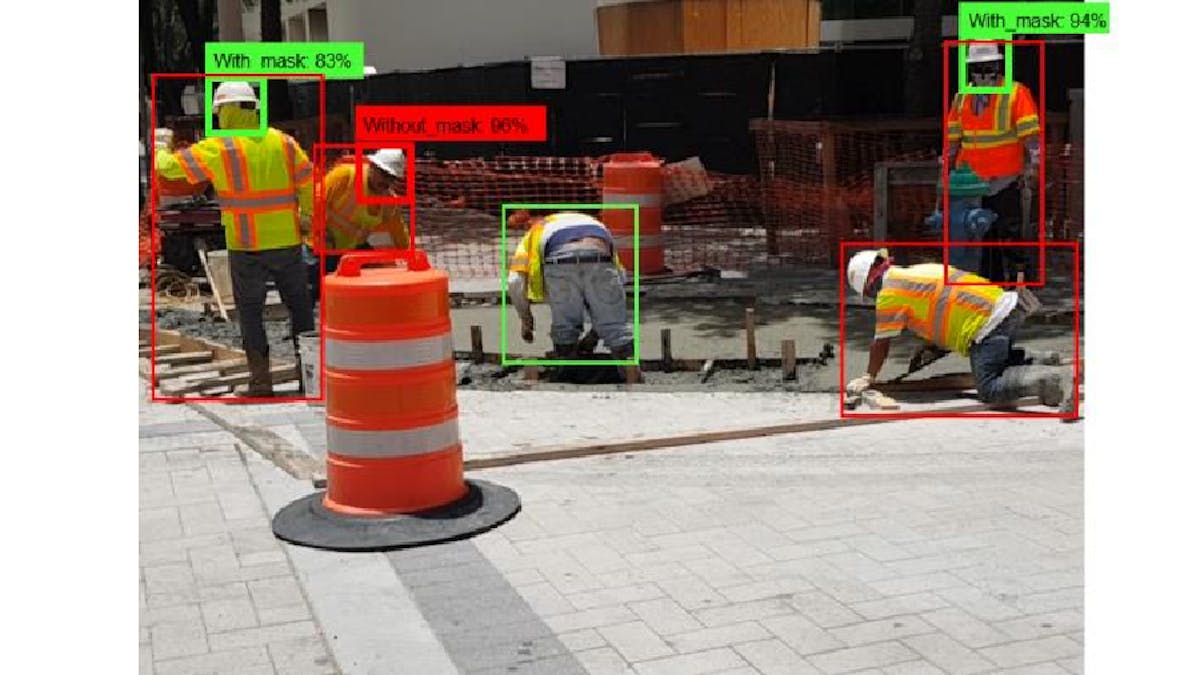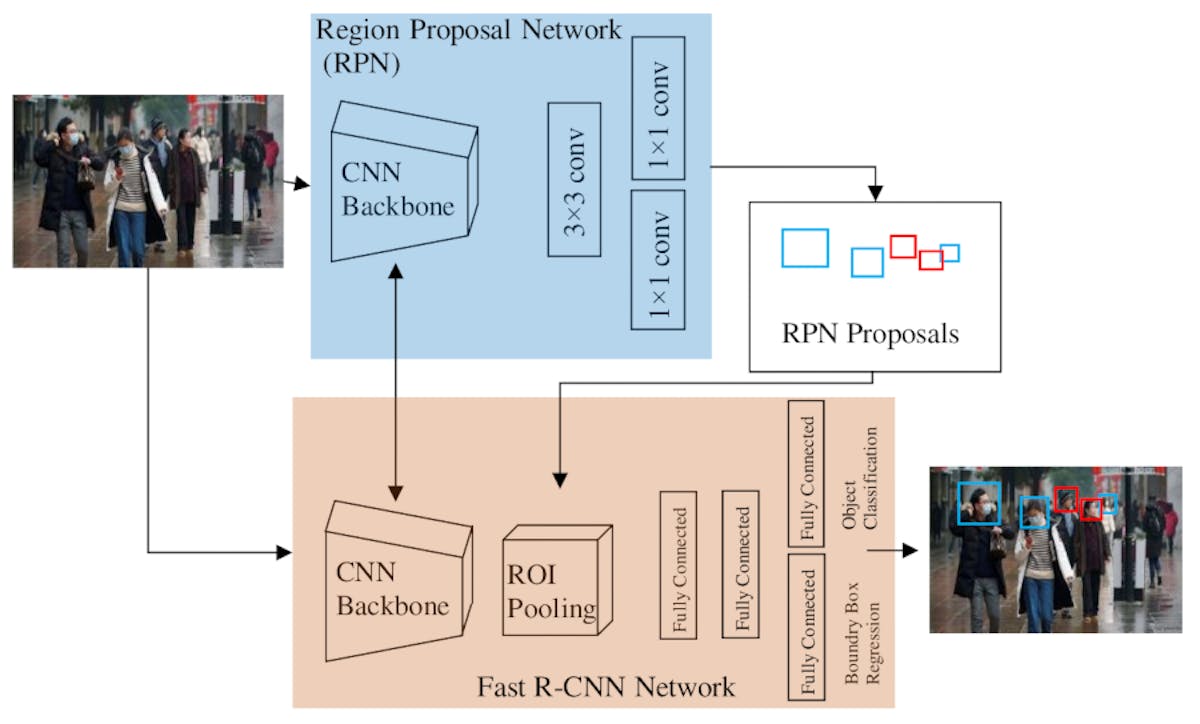TensorFlow-Based Computer Vision System Aims to Enforce COVID-19 Safety Compliance in Construction
Designed to enforce COVID-19 safety measure compliance, the automated system tracks distancing and mask use on incoming video feeds.

A team of researchers from Texas A&M University, alongside colleagues from the University of Wisconsin-Milwaukee and the State University of New York at Binghamton, have developed a system that uses a TensorFlow-based network to automatically monitor construction workers for COVID-19 safety compliance.
"The COVID-19 pandemic has caused many shutdowns in different industries around the world. Sectors such as infrastructure construction and maintenance projects have not been suspended due to their significant effect on people's routine life," the researchers explain in the paper's abstract. "In such projects, workers work close together that makes a high risk of infection."
"The World Health Organization recommends wearing a face mask and practicing physical distancing to mitigate the virus's spread. This paper developed a computer vision system to automatically detect the violation of face mask wearing and physical distancing among construction workers to assure their safety on infrastructure projects during the pandemic."

Before you can train a computer to tell whether someone's wearing a face mask or not, though, you need to teach it what that looks like. The researchers collected and manually annotated 1,000 images of workers wearing face masks in a variety of ways, and added them to an existing face mask dataset for a total of 1,853. After training and benchmarking, they settles on the Faster R-CNN Inception ResNet V2 network, which proved 99.8 percent accurate.
At the same time, the team worked on giving the system the ability to monitor physical distancing between workers using the Faster R-CNN Inception V2 network. Applying a transformation matrix to correct for camera angles, the system calculates the Euclidian distance between pixels and transforms it into a physical distance between workers — with six feet being set as the minimum safe distance.
"The final model was applied on four videos of road maintenance projects in Houston, TX, that effectively detected the face mask and physical distance," the researchers note. "The output of the four cases indicated an average of more than 90% accuracy in detecting different types of mask wearing in construction workers. Also, the model accurately detected workers who were too close and didn't practice the physical distancing."
"Road project owners and contractors can use the model results to monitor workers to avoid infection and enhance workers' safety. Future studies can employ the model on other construction projects such as building projects. Also, future studies can try other detection models and tune the hyper-parameters to increase the detection accuracy. We recommend that construction owners use the proposed system to enhance construction workers' safety in the pandemic situation."
The paper is available now on arXiv.org under open-access terms.
Freelance journalist, technical author, hacker, tinkerer, erstwhile sysadmin. For hire: freelance@halfacree.co.uk.

